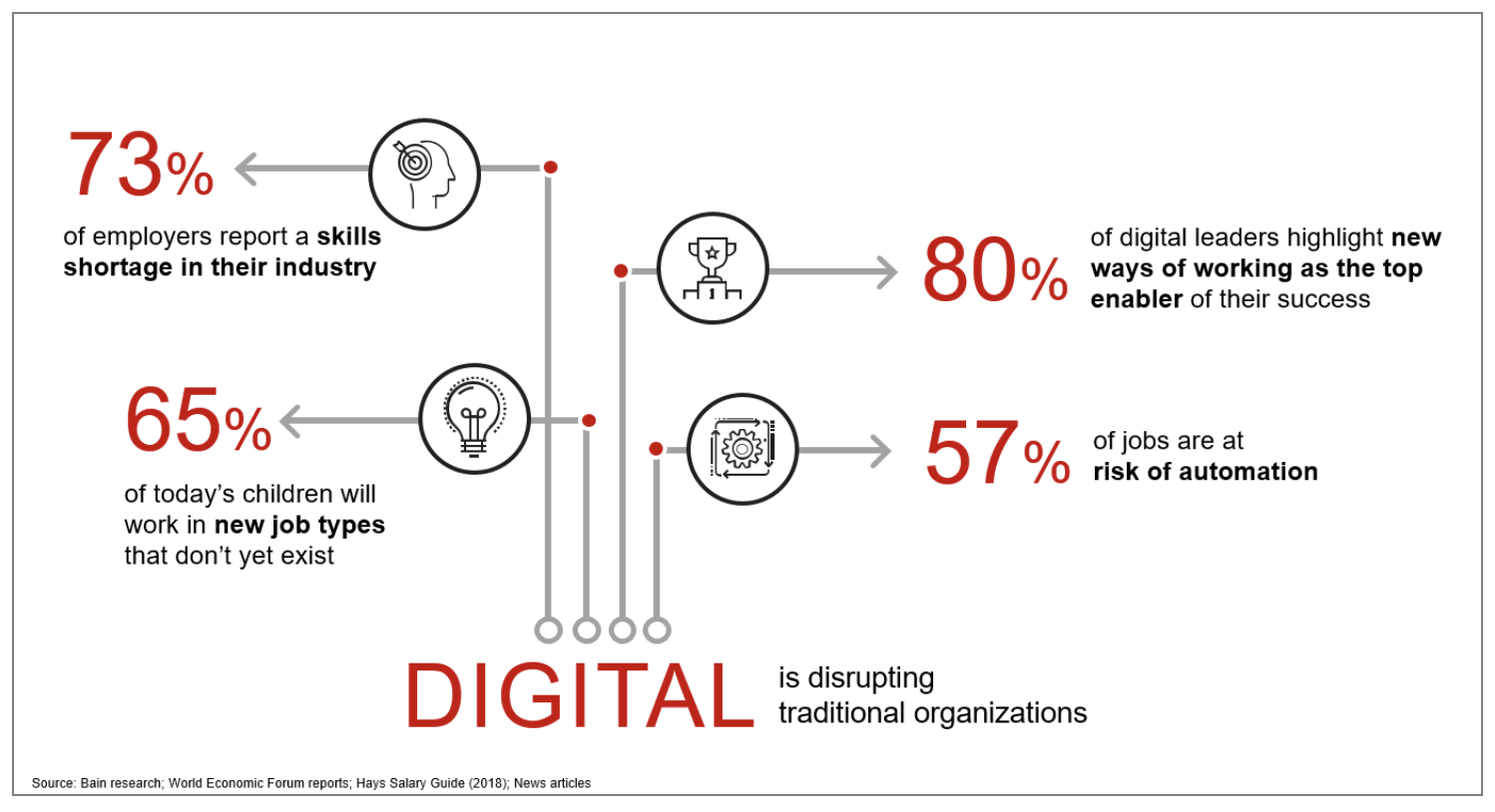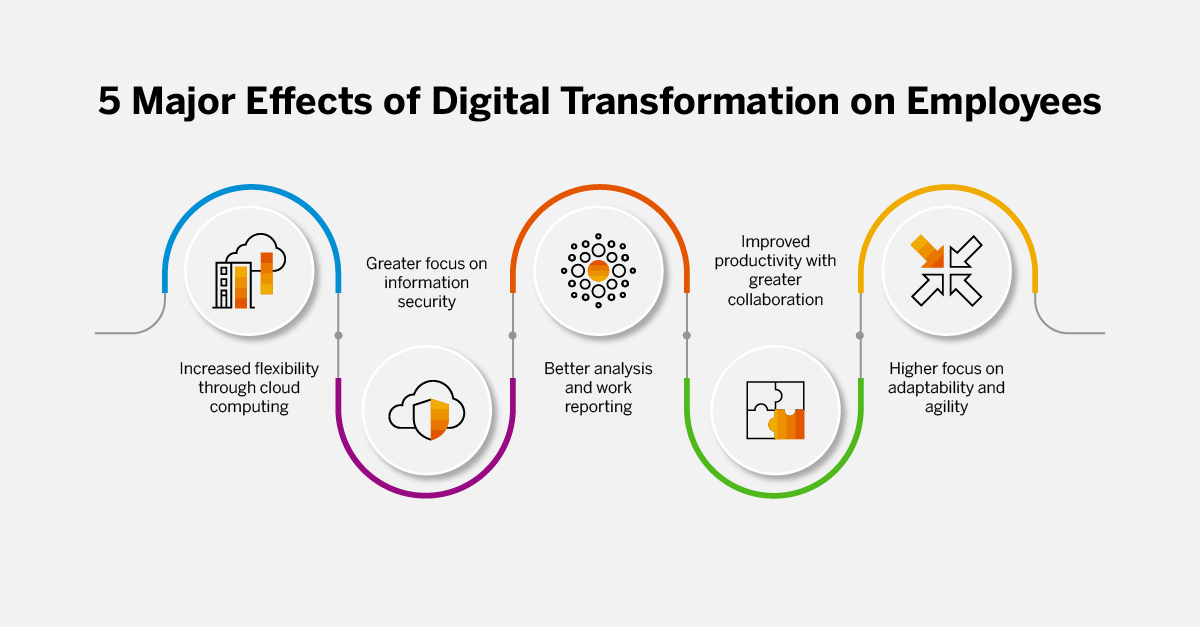Understanding the Impact of Digital Transformation on the Workforce
Digital transformation is rapidly changing how businesses operate, and its impact on the workforce is significant. With the integration of digital technologies into all aspects of a business, traditional job roles are changing, new opportunities are emerging, and the demand for digital skills is rising. In this article, we will explore the impact of digital transformation on the workforce in more detail.

Impact of Digital Transformation on the Workforce
The impact of digital transformation on the workforce has been significant. With the integration of digital technologies into all aspects of a business, traditional job roles are changing, new opportunities are emerging, and the demand for digital skills is on the rise. While some workers may have been displaced due to the automation of certain jobs, digital transformation has also created new job opportunities, increased job satisfaction and productivity through flexible work arrangements, and enabled workers to engage in continuous learning to stay up-to-date with the latest digital technologies. In this article, we will explore some of the benefits of digital transformation on the workforce in more detail.
Automation of Jobs
One of the most significant impacts of digital transformation on the workforce is the automation of jobs. With the integration of artificial intelligence, machine learning, and robotics, many routine jobs are now being automated. This automation has led to the displacement of some workers performing these tasks, but it has also created new opportunities for workers with the skills to work with these technologies.
For example, manufacturing jobs that humans previously did can now be done by robots. This has led to job losses in some areas, but it has also created new job opportunities for workers with the skills to program and maintain these robots.

Increased Demand for Digital Skills
As organizations undergo digital transformation, there is an increased demand for workers with digital skills. These skills include data analysis, programming, digital marketing, and cybersecurity. Workers with these skills are in high order and can command higher salaries.
The demand for digital skills is not limited to the tech industry. Almost all industries are now looking for workers who have digital skills. For example, traditional marketing jobs now require workers who have digital marketing skills, and HR jobs require workers who know HR technology.
New Job Roles
Digital transformation has created new job roles that did not exist before. These job roles include data scientists, digital strategists, and user experience designers. These new roles require new skills and expertise, and workers who have them are in high demand.
For example, data scientists are responsible for analyzing large amounts of data and identifying trends and insights to help organizations make better decisions. Digital strategists are responsible for developing strategies to help organizations achieve their digital goals. User experience designers are accountable for creating user-friendly digital experiences that can help organizations attract and retain customers.
Flexible Work Arrangements
Digital transformation has also led to the adoption of flexible work arrangements. With the use of digital technologies, workers can now work remotely or have flexible work schedules. This flexibility has led to an increase in job satisfaction and productivity.
For example, workers with family responsibilities can now work from home and still be productive. Workers who commute long can now work from home on certain days and avoid the commute. This flexibility has also enabled organizations to tap into a global talent pool and hire workers from different parts of the world.

Need for Continuous Learning
With the rapid pace of technological change, workers must continuously learn to keep up with the latest digital technologies. This learning can occur through online courses, webinars, and workshops, among other avenues. Workers willing to engage in continuous learning are better positioned to take advantage of new opportunities that arise due to digital transformation.
For example, workers who have digital skills can take online courses to learn about new technologies and stay up-to-date with the latest trends. Workers willing to learn new skills are also more likely to be promoted and have better job security.
Final words
Digital transformation has disrupted various industries and significantly changed how organizations operate. One of the most significant impacts of digital transformation is on the workforce. Automation of jobs, increased demand for digital skills, new job roles, flexible work arrangements, and the need for continuous learning are some of the impacts of digital transformation on the workforce. It is essential to understand these impacts to ensure that workers are prepared for the changes taking place. Organizations must invest in upskilling their existing workforce and hiring workers with the necessary digital skills to take advantage of digital transformation opportunities.
My newsletter is a great way to stay connected and be the first to read all the new content. Subscribe and don’t miss out on this opportunity to expand your knowledge and stay informed about the topics that matter most to you.


